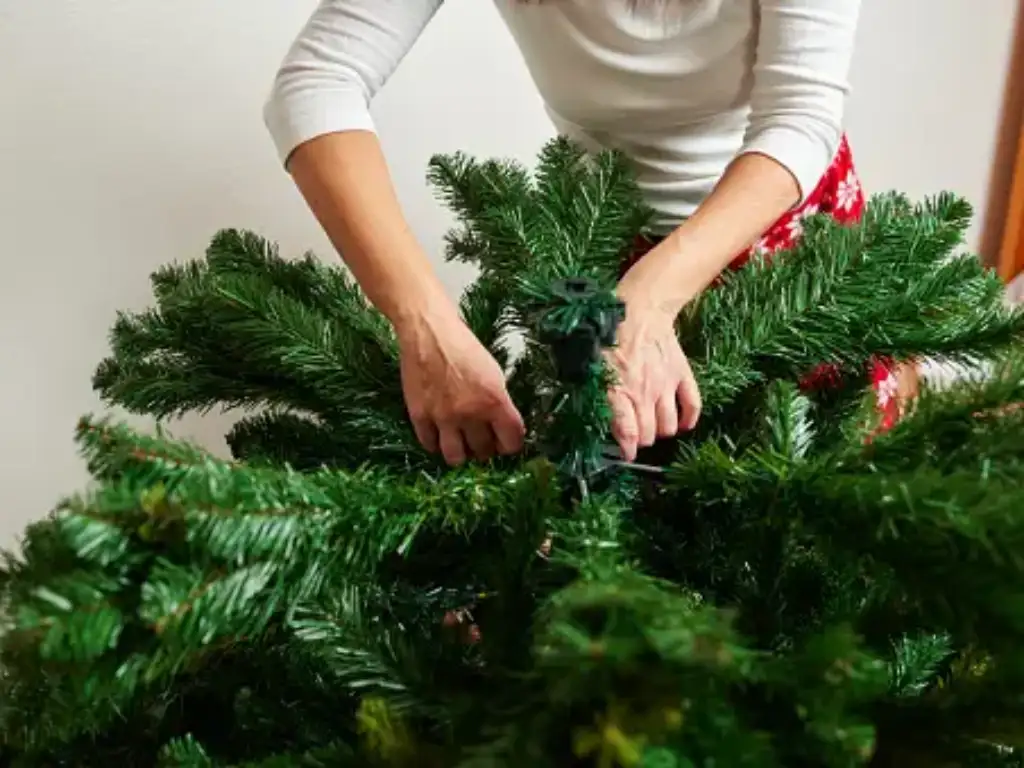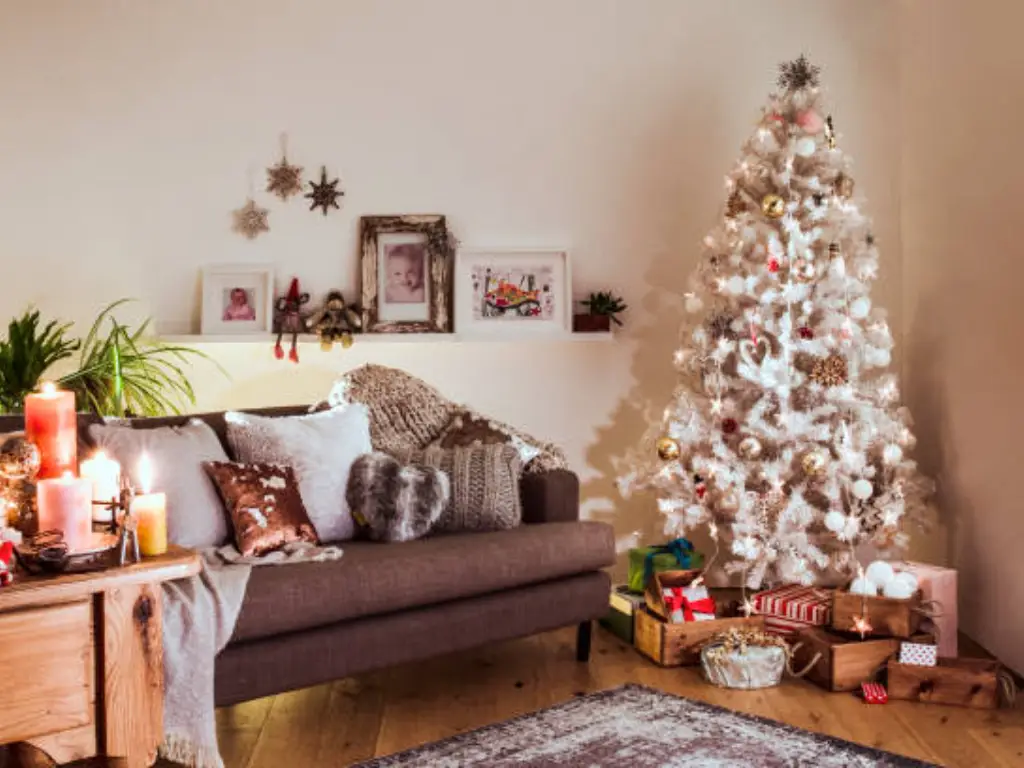Introduction
Creating an artificial tree that looks real is a fun and rewarding DIY project. Whether you’re looking to add a touch of greenery to your living room without the maintenance of a real tree, or you need a specific type of tree that’s hard to find in nature, this great tutorial is for you. We’ll walk you through the process step by step, from selecting the right materials to assembling your tree, so you can enjoy a beautiful, lifelike tree in your home.

Artificial vs Real Trees: Why Artificial Trees?
| Feature | Artificial Trees | Real Trees |
| Allergies | Allergy-friendly | Allergenic |
| Cost | One-time | Recurring |
| Maintenance | Low | High |
| Market Trend | Rising | — |
| Ideal For | Busy individuals | Nature enthusiasts |
The debate between real and artificial trees in our homes is as much about aesthetics as it is about practicality. Real trees can offer a slice of the outdoors, a natural feel to any room, but they come with a set of challenges. They need regular care like watering and pruning, they can trigger allergies, and they can become costly.
Let’s look at the basic facts. Time is a precious commodity, and tending to a real tree can consume up to 70 hours per year. That’s time you might not have to spare. Allergies present another pressing concern- with artificial trees, there is no pollen to worry about, making life easier for the 50 million allergy sufferers in the U.S.
Cost is another factor where artificial trees have an edge. Sure, the initial investment might be similar to purchasing a live tree. Still, without the need for ongoing care- no water, no special plant food, no new pots- the artificial tree is a one-time purchase that can last for years.
Market trends reflect this shift towards practicality. Artificial tree sales have seen a consistent uptick, growing by about 15% in the past few years alone, as consumers recognize the benefits of zero maintenance greenery in their homes.
Choosing an artificial tree means opting for ease and convenience. It assures that your living space has a touch of nature without the demands of constant care. For busy lifestyles, homes with pets or small children, or anyone seeking a low-maintenance option, an artificial tree is simply the sensible choice.
Easy and Detailed Steps to Make Your Artificial Tree
Time Needed: Setting aside one day should be sufficient to complete your project. It’s a great way to spend some creative time, and the process is as rewarding as the outcome.
- Gather the Right Supplies for Constructing Artificial Trees
Tools Needed
You’ll need basic tools like wire cutters, a small drill bit, and perhaps some gorilla glue or hot glue. These tools will help you shape and secure your tree.
Tree Branch Materials
Start with a sturdy real tree branch for the base. This will give your artificial tree a natural look. Look for branches in your backyard or a nearby park (with permission, of course).
Artificial Leaves and Branches
You can find faux leaves and full branches at craft stores or online. Choose varieties that match the look you’re going for, whether it’s a faux olive tree, faux ficus tree, or something else.

- Find the Perfect Tree Branch for the Base
Look for Straight, Sturdy Branches
Your base branch should be strong enough to support the artificial branches you’ll add later. Straight branches work best, but a slight curve can add character.
Consider Height and Width for Placement
Think about where your tree will go. A tall tree might be perfect for a corner in your living room, while a shorter, fuller tree might work better in a smaller space.
- Prepare the Tree Branch for Building
Prune Off Any Remaining Live Foliage or Branches
Clean up your base branch by removing any small twigs or leaves. This will give you a clean slate to start adding your artificial elements.
Sand and Seal the Wood (Optional)
For a smoother finish, you can sand down the rough edges. Sealing the wood is optional but can help protect it and give it a polished look.
- Create a Sturdy Base for the Tree Trunk
Option 1: Use a Bucket Filled with Concrete
This is a solid base option that will keep your tree stable. You can hide the bucket with decorative elements later.
Option 2: Insert into a Heavy Planter Pot
If you prefer a more decorative base, choose a heavy pot that complements your decor. Ensure it’s weighted enough to support the tree.
- Drill Holes for Inserting Artificial Branches
Use a Small Drill Bit
Select a drill bit that matches the size of your faux branches’ stems. Drill small holes in the main branch where you want your artificial branches to go.
Angle Holes for Natural Positioning
Drill the holes at various angles to mimic the way branches naturally grow from a tree. This will give your artificial tree a more realistic appearance.
- Prepare the Artificial Stems and Leaves
Expose the Wires of the Stems for Insertion
If your faux tree branches have wire centers, strip a small section of the faux material at the end to expose the wire. This makes it easier to insert them into the drilled holes.
Consider Painting Leaves that Look Unnatural
If any of your faux leaves look too fake, a light coat of spray paint can help them blend in better with the real branch base for a more natural look.
- Start Attaching Stems from the Top Down
Focus on Tip Placement First
Begin by placing the branches at the top of your tree to establish the height and shape. This sets the tone for the rest of the tree.
Work Inwards Towards Trunk Second
After the top is set, start filling in the tree by working your way down and towards the trunk, adding branches to create fullness.
- Use Floral Tape to Secure the Stems
Activate Adhesive by Stretching Tape
Floral tape becomes sticky when stretched. Pull it gently to activate the adhesive before wrapping it around the branches.
Wrap Around Junction Tightly
Secure the artificial branches to the real branch by wrapping the floral tape tightly around the junctions. This will keep them in place.
- Continue Layering Stems Until Satisfied
Stand Back Frequently to Check Balance
Every so often, take a step back to look at your tree from a distance. This helps you see where more branches are needed to create balance.
Know When to Stop Adding More
It can be tempting to keep adding branches, but part of the beauty is in the simplicity. Stop when the tree looks full but not overcrowded.
- Trim Back Excess Branches on Trunk
Keep Some Bare Branches for Realism
Leaving some of the main branch exposed can add to the realistic look of your tree. Trim back any artificial branches that don’t fit the natural shape.
- Cover Any Visible Floral Tape or Mechanics
Paint Tape to Match Tree Bark Color
If any floral tape is visible, you can paint it to match the color of your tree’s trunk. This helps hide the tape and blend it into the tree.
Add Spanish Moss, Vines, or Other Natural Elements
Adding elements like Spanish moss or small vines around the base of the branches can help conceal any mechanics and add to the tree’s natural look.
- Consider Adding Weight for Stability
Place Heavy Rocks or Bricks in Base Bucket
If your tree is top-heavy, adding weight like rocks or bricks to the base can help keep it stable and prevent tipping.
Final Step: Fluff and Shape Foliage for a Full, Realistic Look
Separate Leaves and Let Them Fall Naturally
Once all your branches are in place, take some time to fluff out the leaves and arrange them so they fall naturally, just like on a real tree.

How Much Will It Cost?
Making your own DIY fake tree can cost a pretty penny or just a few bucks- it all boils down to what you’re going for and where you get your supplies. Let me break it down for you: If you grab some branches from your yard and snatch up some cheap, but cheerful fake leaves from a dollar store nearby, you’re looking at about $30 to $50. That’s not a lot of cash for a large indoor tree that’s going to make your dining room look lively.
On the flip side, if you’re all about that high-end vibe and want to go all out with top-shelf faux greenery and fancy pots to match, get ready to cough up somewhere around $80 to $150 for total cost, or maybe even more. That’s quite a chunk of change, but it means you’ll end up with a classy, full-on large tree that’s sure to dazzle anyone who sees it.
Here’s the deal: Sure, the whole shebang of an upscale entire tree might cost you three times more than the basic setup, but it could be the smarter move in the long run because it’s meant to last. It’s the kind of piece that can stick around your house and look sharp year after year.
Now, if you’re someone who likes changing up the house look pretty often, think about if the cheaper DIY option is the better way to go. It means you can switch things up without breaking the bank next time you’re in the mood to shake things up in your living space.
Conclusion
Building your own artificial tree can be a cost-effective and fulfilling way to add a tailored touch to your decor. Embrace the creative journey and take pride in crafting a unique item that complements your space.